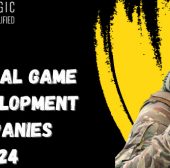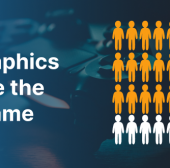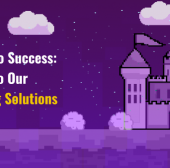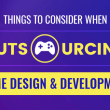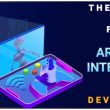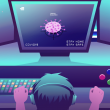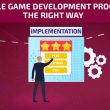When people usually ask me what I do as a game designer, my answer is something like this, “I create a game which provides an enjoyable experience, an interactive journey which a player can live through.”
Many people who design and create games for a living can tell you that the production of the game is never as pretty as expected.
Impending timelines, delays in production, stress from video games publishers, and countless hours are just some of the several challenges that occur during the development process.
Do you know how definite the game development process is? It is not a game of one man but takes an entire team as well as their skills to build a game.
This article walks through the game development process and what it takes to develop a game from scratch. Each game project has 3 distinct stages, called pre-production, production, and post-production. These three main phases in any game development are further divided and retitled for a specific task. So, let’s begin:
Pre-production
In the pre-production stage, planning of the game is done. It is where the designers of the game will be doing most of their work. The process involves the following facets:
Research: Research is an important fundamentals of the game design process. It will help find potential tools to use, choosing genres, characters to animate, ideas to develop, and much more. Familiarise yourself with the games that already exist in the market. This is because those games will be the competition for your game, and they must have set the standard that a designer must meet or beat them in order to be successful.
Brainstorming: This is the most fun part - where the designers dream big and start thinking about the ideas of the game. While brainstorming, they write down everything that they want to incorporate in their game. This phase of the process is where the designers can explore various brainstorming techniques. It may be either visual via storyboards or a conceptual art demonstrating what the character or environment may look like.
Game concepts: Once the designer decides the game idea, then comes the game concepts. What will be the genre of the game? What is the time frame? Who are its characters? Will the game be in 2D or 3D? Who is my target audience? What kind of environment will it be? Will it be single or multiplayer games? What will be the storyline? How many levels will be there? All these questions must be answered before to create a completely working, doable, and fascinating game environment that a player would like to play and get involved with
Concept Art: Once all the details are decided, next come developing the style of the game. This is done through concept art. Concept art shows how the characters, objects, buildings, and areas will look. They can be in a realistic style, cartoon style, etc. A good work of concept artist is vital because that gives the entire team a visual guide to the overall aspect of the game.
Map development: Now that the details are in place, the style of the game has been selected, the layout must be considered. Is it an island? Is it divided into sections or territories? The designer makes these choices(unless they are specified in brief). This phase does not have to be too detailed and is simply designed as a basis for the game’s main structure.
Game Design Document: It is abbreviated as GDD. Game Design documents help in keeping the team organized and in providing direction throughout the process of game development. This includes the game’s proposed design like the concept of the game, genre, core game mechanics, gameplay, timeline, illustrations/sketches, story and characters, levels and monetization strategies. GDD is updated as well as optimizes regularly.
Prototype: Now that you have a great game idea, it is time to check if the game will work or not, and whether it is worth pursuing it. This is where the prototype comes in very useful. It is a raw test that checks the functionality of the game, environments, gameplay, mechanics, user experience, etc. Sometimes many ideas do not pass this stage. So, it can save a lot of wasted time and money.
You may also read: Difference between Game Design and Development
Production
Welcome to the longest and the most challenging process of game development. Designing, texturing, level blocking…..Lots and lots to do, so all hands on deck!
Production is the crucial phase of game development. Most of the time, resources, and effort are spent on developing the game during this stage. In this stage, the team takes the concepts produced during the pre-production stage and transforms them into source code and different assets. Following are the steps involves in this stage:
Design: The design team continues their work from the stage of pre-production. Working along with the artist, they render character models, iterate on the interfaces, design dynamic and interactive level designs and environments, and so on. The models become more accurate and granular. Some ideas get refined at this stage, whereas some are discarded.
Level blocking: This approach is used to layout, shape, establishing size, scale, etc. of each level. Each block may depict a cliff or a building or vehicle or object. Doing this will give you to rapidly and easily get a feel of the environment you have built and make necessary positional adjustments. This is also an efficient way to break down a large level into more manageable blocks which can easily be detailed one by one.
Texturing: Textures are the flat images that are added to the model to give it colour and detail. In this process, the whole object is turned from grayscale to colour scale. It is applied to all the static meshes on the objects.
Lighting: Lighting is an imperative element of game design principles. It is an art of filling each scene with artistic touch and beauty. It is used in setting up the atmosphere, evoking emotions and mimicking the real world.
Audio Production: Sound plays a significant role in games. Audio production is the method of adding various sounds as per the game needs.
Artificial Intelligence: Artificial intelligence is used in the game, which reacts to the movements, actions or decisions that the player makes.
Cinematics: Cinematics are usually an interlude from the game used to inform the player about the mission of the game, goals, hand out clues, character information, maps, etc.
HUDs and Menus: HUD (heads-up display) or status bar is the information that is displayed on a screen in order to assist or inform the player of what is happening. HUD provides info such as character’s health, weapons, time, position on the map, etc. Menus direct the player on the goals, in-game purchases details, available elements, and many other things.
You may also read: Mobile game developer qualities to look before you hire them
Post Production
Then comes the final stage of the game development - the post-production phase.
Testing: Each feature as well as the mechanic in the game, need to be tested for quality control. A game which is not tested thoroughly is a game that is not even ready for an Alpha release. Following are some points that a playtester might point out during this phase:
-
- Are there any bugs in any levels?
-
- Are there traits that can manipulate the game?
-
- Is everything rendering on the screen?
-
- Is my character getting stuck in a particular spot?
- Is the character dialogue old and dull?
After endless hours of testing and iterating, the game should be all set for a late-Alpha or even a Beta release, on the basis of how polished the in-game features are. At this stage, the players will get hands-on the game for the very first time.
Redesign: On the basis of findings during the testing process, there might be many elements that might need to be fixed or redesigned.
Release: The game is developed and it is tested, now the game has reached the implementation stage where the game is finally launched to a wider audience.
Support and Maintenance: The work does not end by releasing the game. It is just the beginning of a long journey. The game updates are crucial in order to achieve a consistent user base growth and high retention rates. To keep the game exciting, the game is often updated by adding new modes, features, levels, etc.
Why choose Logic Simplified for game development?
Among the innumerable gaming design studios in the market, Logic Simplified a game designer, and a development company has hands-on experience of designing and creating various genre video games (including PC games, Console games and cross-platform games). To develop a perfect game is not just about executing the steps correctly; it also includes the right techniques and tools and has a perfect team. The game concept designers are well-versed in different methods. They are innovative, highly productive, and introspective. They know the needs of the customers and come up with the ideas based on those requirements. For any query related to game development services, please contact us here or write to us at enquiry@logicsimplified.com
 Get a Quote
Get a Quote



